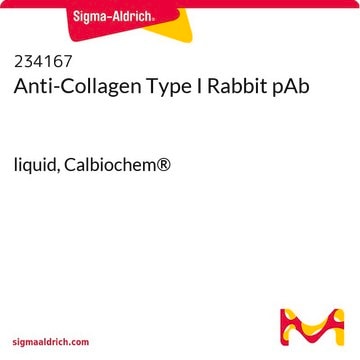05-1478
Anti-RUNX2 Antibody, clone AS110
clone AS110, from mouse
Sinónimos:
Acute myeloid leukemia 3 protein, CBF-alpha 1, Core-binding factor subunit alpha-1, Oncogene AML-3, Osteoblast-specific transcription factor 2, PEA2-alpha A, PEBP2-alpha A, Polyomavirus enhancer-binding protein 2 alpha A subunit, SL3-3 enhancer factor 1
About This Item
Productos recomendados
origen biológico
mouse
Nivel de calidad
forma del anticuerpo
purified antibody
tipo de anticuerpo
primary antibodies
clon
AS110, monoclonal
reactividad de especies
human
técnicas
immunocytochemistry: suitable
western blot: suitable
isotipo
IgG2b
Nº de acceso NCBI
Nº de acceso UniProt
Condiciones de envío
wet ice
modificación del objetivo postraduccional
unmodified
Información sobre el gen
human ... RUNX2(860)
Descripción general
Especificidad
Inmunógeno
Aplicación
Epigenetics & Nuclear Function
Transcription Factors
Calidad
Western Blot Analysis:
Anti-RUNX2, clone AS110 detected RUNX at 1:1,000 to 1:2,000 dilution in HL-60 cell lysate resolved via SDS-PAGE and transferred to PVDF.
Descripción de destino
Forma física
Almacenamiento y estabilidad
Handling Recommendations: Upon receipt, and prior to removing the cap, centrifuge the vial and gently mix the solution.
Otras notas
Cláusula de descargo de responsabilidad
Not finding the right product?
Try our Herramienta de selección de productos.
Código de clase de almacenamiento
12 - Non Combustible Liquids
Clase de riesgo para el agua (WGK)
WGK 1
Punto de inflamabilidad (°F)
Not applicable
Punto de inflamabilidad (°C)
Not applicable
Certificados de análisis (COA)
Busque Certificados de análisis (COA) introduciendo el número de lote del producto. Los números de lote se encuentran en la etiqueta del producto después de las palabras «Lot» o «Batch»
¿Ya tiene este producto?
Encuentre la documentación para los productos que ha comprado recientemente en la Biblioteca de documentos.
Nuestro equipo de científicos tiene experiencia en todas las áreas de investigación: Ciencias de la vida, Ciencia de los materiales, Síntesis química, Cromatografía, Analítica y muchas otras.
Póngase en contacto con el Servicio técnico








